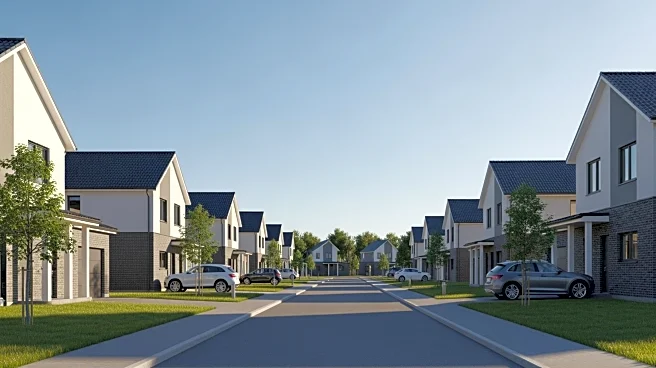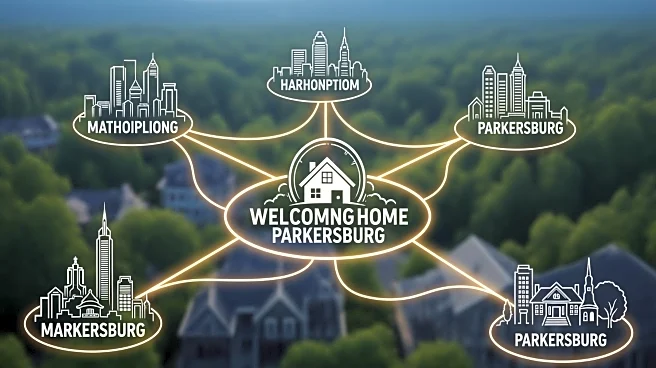What's Happening?
A recent analysis of cross-market demand data from Realtor.com reveals that individuals from major metropolitan areas are increasingly looking to purchase homes in Parkersburg. The data, compiled by Stacker, highlights that the scarcity of homes on the market,
which remains below pre-pandemic levels, is contributing to elevated home prices despite a slowdown in sales over the past year. The report indicates that online house hunting has become a crucial tool for homebuyers, with 97% of them utilizing online resources according to a 2021 National Association of Realtors report. The top metros showing interest in Parkersburg include Washington, DC, New York, NY, and Pittsburgh, PA, with view shares of 14.2%, 11.3%, and 5.9% respectively.
Why It's Important?
The trend of homebuyers from larger metropolitan areas considering Parkersburg as a potential relocation destination underscores the ongoing challenges in the U.S. housing market, particularly the imbalance between supply and demand. This movement could have significant implications for local economies, potentially driving up property values and altering the demographic landscape of smaller cities like Parkersburg. For residents and local policymakers, this trend may necessitate adjustments in housing policies and infrastructure to accommodate an influx of new residents. Additionally, the interest from major metros could signal a shift in living preferences, possibly influenced by remote work opportunities and the search for more affordable living conditions outside of major urban centers.
What's Next?
As the housing market continues to navigate post-pandemic dynamics, it is likely that the trend of cross-market interest will persist, especially if remote work remains prevalent. Local governments in areas like Parkersburg may need to consider strategies to manage potential growth, such as expanding housing supply and enhancing local amenities to attract and retain new residents. Real estate professionals and developers might also see opportunities to cater to this growing demand by investing in new housing projects or revitalizing existing properties. Monitoring these trends will be crucial for stakeholders aiming to capitalize on or mitigate the impacts of this migration pattern.













